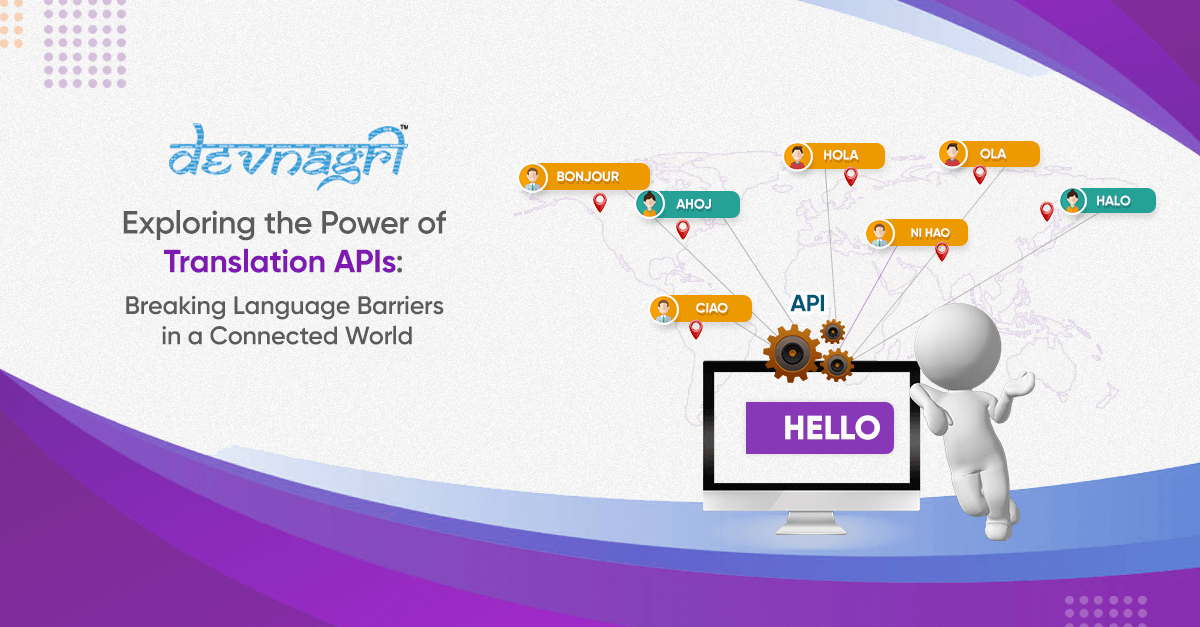
In a world that is increasingly interconnected, the ability to communicate across language barriers is more crucial than ever. Whether it’s for business, travel, or simply connecting with people from different parts of the globe, the need for seamless translation has become pervasive. Fortunately, with advancements in technology, Translation APIs (Application Programming Interfaces) have emerged as powerful tools to bridge these linguistic gaps, enabling smoother communication and fostering collaboration on a global scale.
Also Read: Unlocking Boundless Communication: The Significance of English to Telugu Translation
Understanding Translation APIs
Translation APIs are software interfaces that allow developers to integrate translation capabilities into their applications or websites seamlessly. These APIs leverage sophisticated algorithms and machine learning techniques to analyze and translate text from one language to another accurately. They provide a convenient way to automate the translation process, saving time and resources while ensuring high-quality translations.
Also Read: Enhancing Global Reach: The Importance of Subtitle Translation
How Translation APIs Work
The operation of Translation APIs typically involves several steps:
- Text Analysis: The API analyzes the input text to identify its language and structure, ensuring accurate translation.
- Language Detection: Through advanced language detection algorithms, the API determines the source language of the text.
- Translation: Using pre-trained models and neural networks, the API translates the text into the desired target language.
- Post-Processing: Additional processing may be performed to enhance the accuracy and fluency of the translation, such as context analysis and grammatical adjustments.
- Output: The translated text is returned to the user, ready to be displayed or further processed as needed.
Also Read: Unlocking Communication: The Power of English to Gujarati Translation
Benefits of Translation APIs
The adoption of Translation APIs offers numerous benefits across various domains:
- Improved Accessibility: By breaking down language barriers, Translation APIs make information and resources more accessible to a global audience, regardless of linguistic background.
- Enhanced Communication: Whether in business negotiations, customer support, or social interactions, Translation APIs facilitate smoother communication between individuals or organizations speaking different languages.
- Cost and Time Savings: Automating the translation process through APIs reduces the need for manual translation efforts, saving both time and resources for businesses and individuals.
- Scalability: Translation APIs can handle large volumes of text efficiently, making them suitable for scaling applications and services to meet growing demands.
- Consistency: APIs ensure consistency in translation output, maintaining the integrity of content across various languages and platforms.
Also Read: Navigating the Complexity of Legal Translation: Ensuring Accuracy and Clarity
Applications of Translation APIs
The versatility of Translation APIs enables their integration into a wide range of applications and industries:
- E-commerce: Online retailers can use Translation APIs to localize product descriptions, reviews, and customer support, making their platforms more accessible to international customers.
- Travel and Tourism: Travel booking websites and mobile apps can leverage Translation APIs to provide multilingual guides, itinerary suggestions, and real-time assistance to travelers worldwide.
- Healthcare: Translation APIs facilitate communication between healthcare providers and patients from diverse linguistic backgrounds, ensuring accurate diagnosis and treatment.
- Education: E-learning platforms and educational apps can use Translation APIs to offer courses and materials in multiple languages, expanding their reach to global audiences.
- Legal and Government Services: Translation APIs aid in translating legal documents, government forms, and public service announcements, enabling efficient communication and access to essential services for non-native speakers.
Also Read: Bridging Cultures: The Importance of English to Tamil Translation
Challenges and Considerations
While Translation APIs offer significant advantages, they also pose certain challenges and considerations:
- Accuracy: Achieving high accuracy in translation, especially for complex or specialized content, remains a challenge for some APIs, necessitating continuous improvement and refinement.
- Cultural Nuances: Translating content involves more than just converting words; it requires understanding cultural nuances and context, which can be challenging for automated systems.
- Data Privacy and Security: Handling sensitive information during the translation process raises concerns about data privacy and security, requiring robust measures to protect user data.
- Language Support: Some languages may have limited support or lower translation quality compared to more widely spoken languages, posing limitations for certain applications and regions.
- Cost and Licensing: Depending on the usage volume and features required, integrating Translation APIs may incur costs, requiring businesses to evaluate pricing models and licensing agreements carefully.
Also Read: Breaking Language Barriers: The Power of a Website Translator
Future Trends and Developments
Looking ahead, several trends and developments are poised to shape the landscape of Translation APIs:
- Enhanced AI Capabilities: Continued advancements in artificial intelligence and machine learning will lead to more accurate and context-aware translations, improving the overall quality of Translation APIs.
- Multimodal Translation: APIs that support translation across various modalities, including text, speech, and images, will enable more seamless and intuitive communication experiences.
- Customization and Personalization: Tailoring translation models to specific industries, domains, or user preferences will become more common, allowing for more accurate and relevant translations.
- Integration with Other Technologies: Translation APIs will increasingly integrate with other technologies such as natural language processing (NLP), speech recognition, and augmented reality, enabling more sophisticated and immersive communication experiences.
- Ethical Considerations: As translation technology continues to advance, ethical considerations regarding bias, cultural sensitivity, and privacy will become increasingly important, driving the need for responsible development and deployment practices.
Also Read: Exploring the Nuances of English to Hindi Translation: Bridging Cultural and Linguistic Divides
Conclusion
Translation APIs represent a powerful tool for breaking down language barriers and fostering global communication and collaboration. From improving accessibility to enhancing business operations and facilitating cross-cultural understanding, the impact of Translation APIs spans across various domains and industries. As technology continues to evolve, Translation APIs will play an increasingly vital role in shaping a more connected and inclusive world. By embracing these tools responsibly and harnessing their capabilities effectively, we can overcome linguistic barriers and unlock new opportunities for innovation and progress in the digital age.





